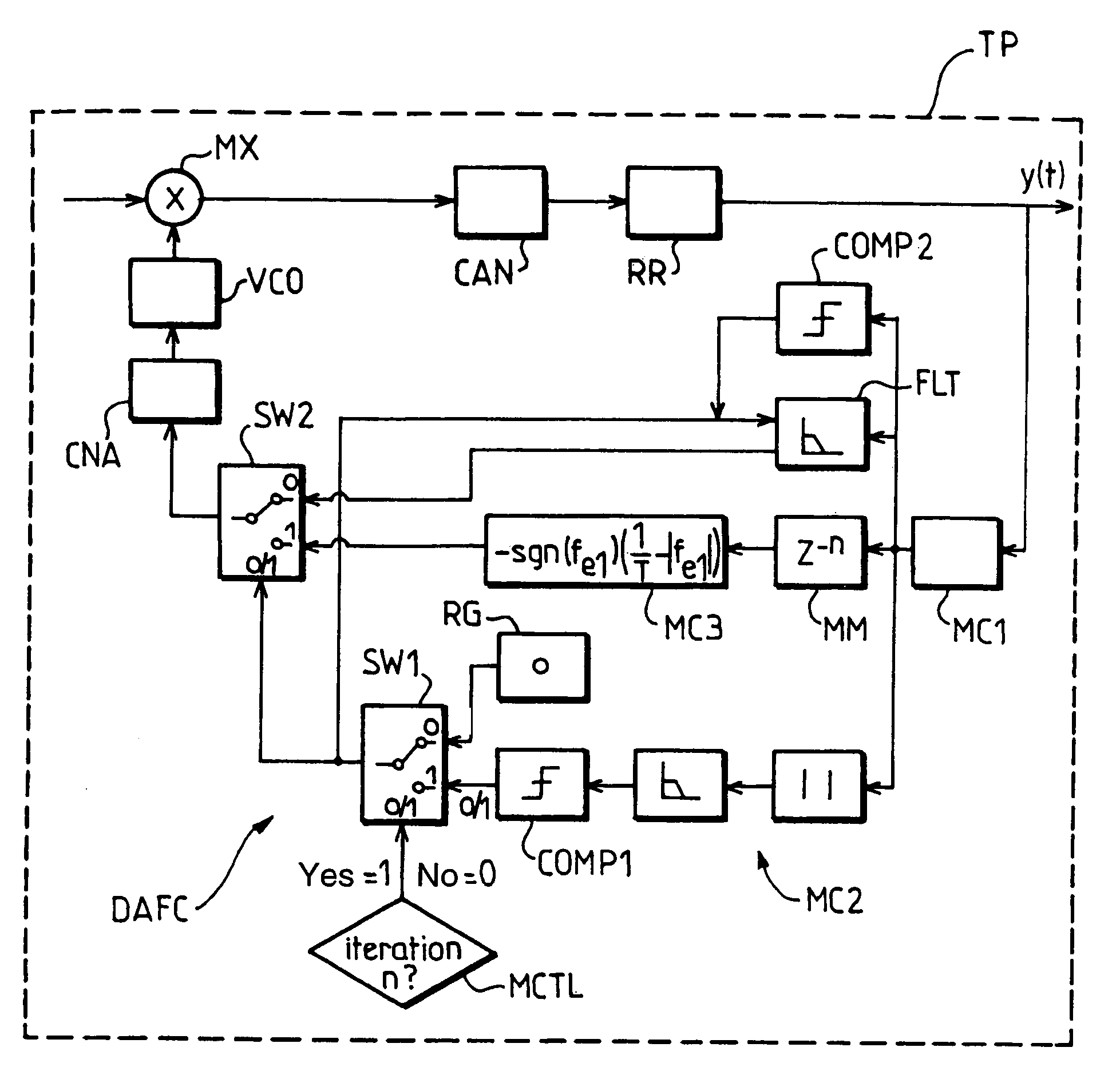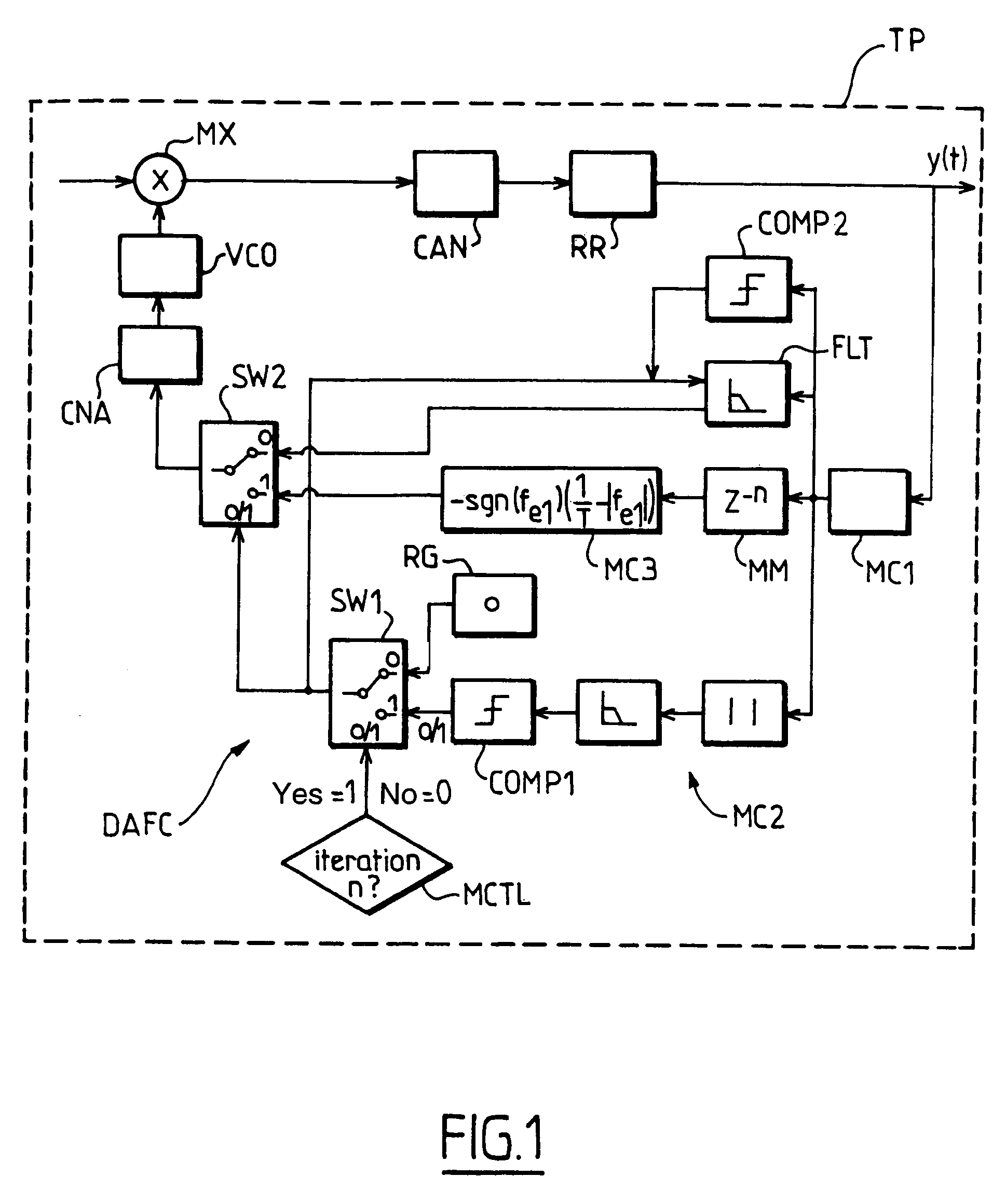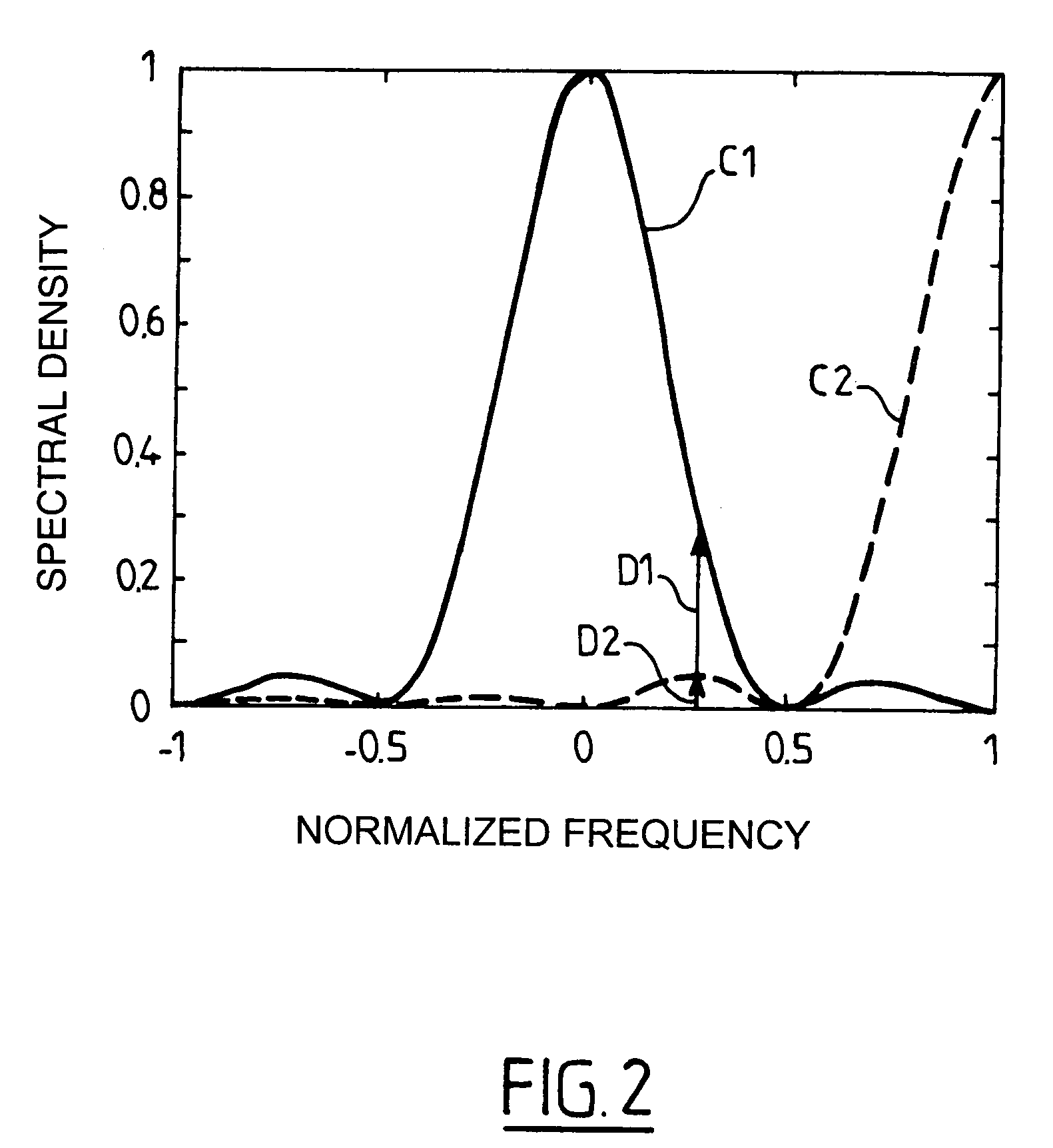Method and device for automatic control of the frequency of a local oscillator in a DS-CDMA type receiver
- Summary
- Abstract
- Description
- Claims
- Application Information
AI Technical Summary
Benefits of technology
Problems solved by technology
Method used
Image
Examples
Embodiment Construction
[0029]In FIG. 1, the reference TP denotes a mobile cell phone belonging to a wireless DS-CDMA type communication system. Conventionally, the analog reception stage of the mobile cell phone TP comprises a mixer MX receiving the incident signal from the antenna. The mixer is preceded and followed by amplifiers, which are not shown in the figures simplify the drawing. Similarly, only one of the processing channels is shown in FIG. 1, which is processing channel 1.
[0030]The frequency transposition signal is derived from a phase locking loop comprising a local oscillator that is voltage controlled and is referenced VCO. After transposition of frequencies in the mixer MX and analog-digital conversion in an analog-digital converter CAN, the signal is a digital base band signal sampled at a sampling rate much higher than the symbol rate equal to 1 / T (where T is the duration of a symbol). This digital signal is then output to a Rake receiver RR that in particular performs frequency despreadi...
PUM
 Login to View More
Login to View More Abstract
Description
Claims
Application Information
 Login to View More
Login to View More - R&D Engineer
- R&D Manager
- IP Professional
- Industry Leading Data Capabilities
- Powerful AI technology
- Patent DNA Extraction
Browse by: Latest US Patents, China's latest patents, Technical Efficacy Thesaurus, Application Domain, Technology Topic, Popular Technical Reports.
© 2024 PatSnap. All rights reserved.Legal|Privacy policy|Modern Slavery Act Transparency Statement|Sitemap|About US| Contact US: help@patsnap.com










